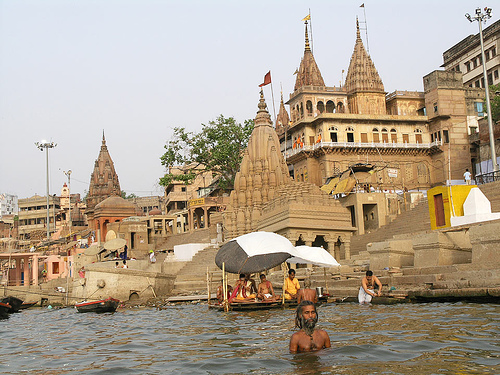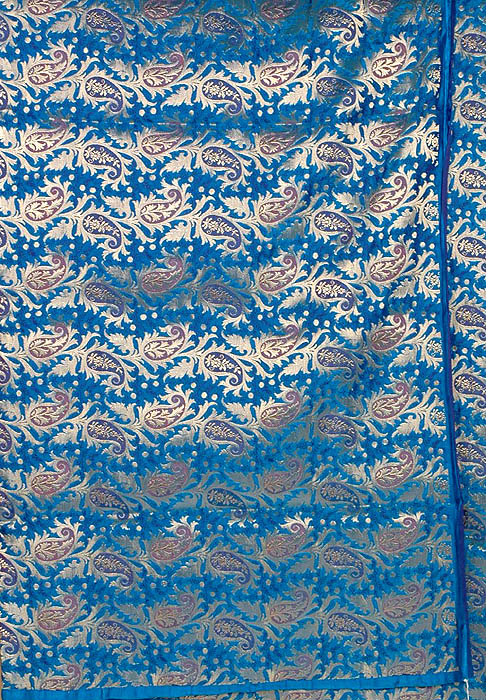Banarasi Brocade
Banaras: The chief center of Art & Culture
Around Ist millennium B.C, Banaras rose to the status of a chief center of art, culture and education. Geographically, Banaras was favorable for all trade as it connected all important state capitals of the time. Trade also prospered because the Ganges offered great mobility and provided great cotton growing fertile regions. Banaras was also famous for silk and wool. Textile industry prospered and grew rapidly. Trade, import and export were no new things at that time. The economy and trade were all well organised and developed. Trade with the eastern countries were intact. Commodities were exchanged under the barter system. Textiles apart from the spices were one of the favorite. The prosperity of the people of Banaras depended on the manufacture and trade of Brocades.

Brocade
In normal weaving, the weft thread passes over and under the warp thread regularly. However, when brocade designs in gold, silver silk or cotton threads are to be woven, special threads are transfixed in between by skipping the passage of the regular weft over a certain number of warp threads, depending upon the requirement of the pattern.The skipping, for all patterning, is made regular by the means of pre-arranged heddles.
Now-a-days, Brocades are woven with golden color threads unlike those threads in real gold, or silver threads polished in gold, that were used in the beginning by kings, queens and the rich people of that era.
Banaras Brocade
Banaras has been the chief center of Brocades or ‘Kimkhabs’ that are woven with gold wires or threads. They are also known as "Kalabattu".
The zari work known as ‘Pot-han’, ‘Baftas' and ‘Amarus’- Brocades in pure silk, and ‘Abrawans’- in gold and silver cloth, are the various sub-types of Brocades.
Kimkhab was too heavy for clothing as they were woven, of gold and silver threads, dense enough to allow visibility of the ground. They were, therefore, used as trappings, hangings and furnishing materials.
Kimkhabs were made of materials known as ekpara, dopara, tinpara, chaupara and even chhapara. These grades were determined on the basis of the number of ‘kalabattu’ threads repeated in a given space. For example, the ‘ekpara’ represents 10 such ‘kalabattu’ threads in a running inch.
The thickness of textiles is due to the silk threads used in the ‘enamel’ work.
The materials in which the Zari patterns were scattered were the true Brocades that were used for clothing.
Zari and Brocades were for the first time recorded by British travelers who visited Banaras.
G.V.Valentia, mentioned that Brocades showed close patterns, were quite expensive and were worn rich people or only on important occasions.
The prosperity of the people of Banaras mainly rested on Brocade and Zari manufacture and trade.
These textiles were popular items of export to European countries.
Among the war prizes, the yield from the Banaras textile market was the greatest.
In the Pre-Moughal period, it was a prevalent darbar custom to award a ‘robe of honour’, the khil’at, that was made of brocade and included a waist band. This was the highest honour bestowed.
In the 15th century, western central India also started weaving and trading brocade.

